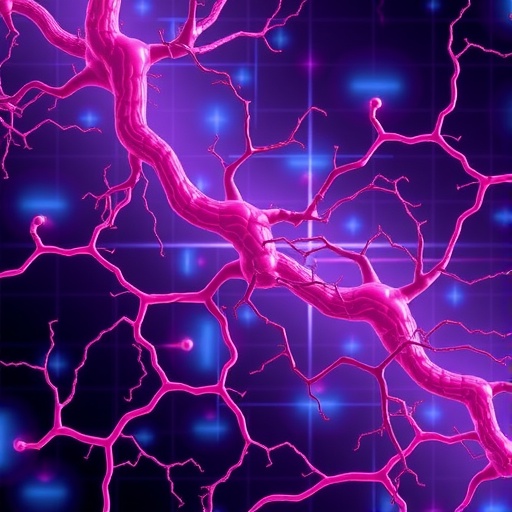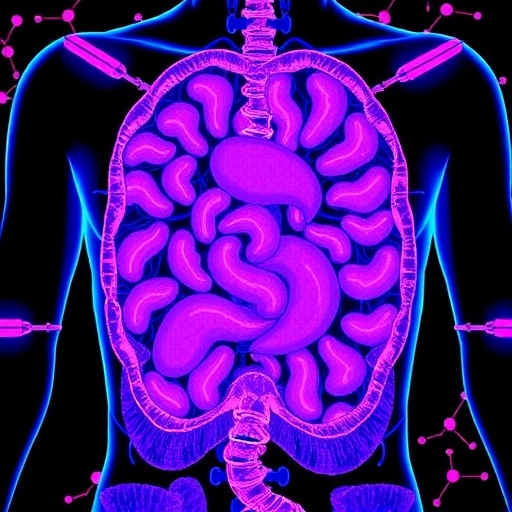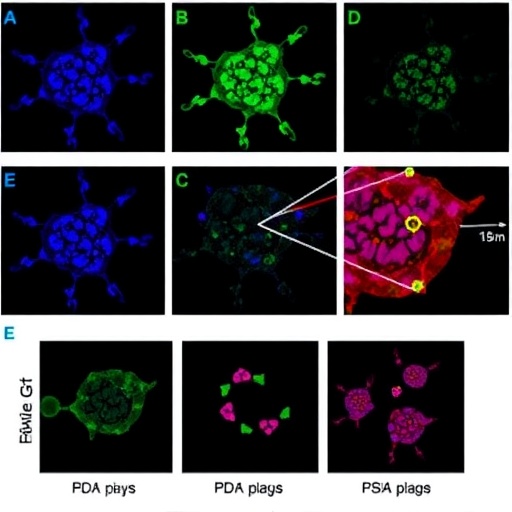Recent breakthroughs in oncology are reshaping how we approach the challenge of halting cancer progression, with a novel emphasis on the tumor vascular microenvironment (TVM). Unlike traditional therapies that directly target tumor cells, this emerging paradigm focuses on the intricate network of blood vessels within tumors—the very lifelines fueling cancer growth and metastasis. Tumor vasculature is notoriously abnormal: vessels are chaotic, fragile, and inefficient, culminating in poor oxygen supply, heightened interstitial pressure, and a hostile microenvironment that paradoxically promotes tumor invasion and resistance to therapy. Recognizing these complexities, researchers are turning their attention to natural medicines that can recalibrate and normalize tumor blood vessels, thereby enhancing treatment efficacy and patient outcomes.
Tumor blood vessels differ markedly from their healthy counterparts. They present a disorganized architecture, often immature and hyperpermeable, which impedes uniform blood flow and restricts adequate drug delivery. This erratic vascular structure generates hypoxic zones that activate cellular pathways favoring malignant progression and increased metastatic potential. In response, tumors secrete a milieu of angiogenic factors, notably vascular endothelial growth factor (VEGF) and fibroblast growth factor (FGF), which drive the formation of an abnormal and dysfunctional vascular network. Conventional anti-angiogenic therapies, while targeting these pathways, frequently encounter resistance or adverse effects, underscoring the need for alternative or complementary strategies.
Natural compounds, with their multifaceted biological activities and generally favorable safety profiles, have surfaced as compelling candidates to modulate the tumor vascular microenvironment. Among these, phenolic compounds such as resveratrol and curcumin exhibit potent anti-angiogenic effects. Resveratrol, a polyphenol found in grapes and berries, has been shown to disrupt VEGF signaling cascades and suppress endothelial cell proliferation, crucial steps in the abnormal angiogenic process. Curcumin, sourced from turmeric, exerts its effects by downregulating VEGF and interleukin-8 (IL-8) pathways, known to mediate inflammation-driven angiogenesis. These molecular interactions translate into the inhibition of pathological blood vessel formation and impede cancer cell migration, delivering dual benefits in the context of tumor biology.
In addition to phenolics, alkaloids such as paclitaxel and colchicine, despite their well-established cytotoxic roles, are being reexamined for their capacity to destabilize tumor vasculature. Both compounds interfere with microtubule dynamics within endothelial cells, arresting cellular proliferation and inducing apoptosis. Paclitaxel, widely used in chemotherapy, reduces vascular density in tumors, effectively starving the cancer of essential nutrients and oxygen. Colchicine’s mechanism involves destabilization of microtubule assembly, suppressing neovascularization and thus limiting the expansion of the tumor’s vascular supply. These alkaloids represent a bridge between natural product pharmacology and vascular-targeted cancer therapy.
Terpenoids, a diverse class of natural products, are also gaining attention for their modulation of angiogenic signaling. Ursolic acid and artesunate disrupt pivotal pathways involving nuclear factor kappa B (NF-κB) and signal transducer and activator of transcription 3 (STAT3), both of which govern endothelial cell proliferation and survival. By attenuating the expression of pro-angiogenic factors, these terpenoids contribute to vascular normalization, characterized by enhanced vessel stability and improved perfusion. Moreover, crustal oligosaccharides derived from natural substrates have shown promising results in reducing endothelial permeability, reinforcing the integrity of tumor blood vessels and facilitating better drug access.
The therapeutic implications of incorporating natural medicines into oncological regimens are profound. They not only exhibit direct inhibitory effects on tumor angiogenesis but also mitigate the adverse side effects commonly associated with conventional anti-cancer drugs. By normalizing the pathological vasculature, these compounds optimize the tumor microenvironment, improving oxygenation and lowering interstitial pressure. This vascular stabilization bolsters the delivery and efficacy of chemotherapy and immunotherapy, overcoming hurdles such as drug resistance and heterogeneous drug distribution within tumors.
In addition to enhancing treatment outcomes, natural medicines hold potential in circumventing adaptive resistance mechanisms. Tumors often develop escape pathways to bypass targeted therapies, including the activation of alternative angiogenic circuits or remodeling of the stroma. Multifunctional natural compounds, with their broad-spectrum effects on signaling pathways, offer a resilient strategy to counteract such plasticity in tumor vasculature. This pharmacological versatility places them at the forefront of integrative cancer care.
The interplay between the tumor vascular microenvironment and cancer progression is complex and dynamic, demanding a nuanced approach that transcends the traditional tumor-centric view. By targeting the vasculature, researchers can disrupt the supportive niche that tumors exploit, thereby impeding growth and metastatic dissemination. The demonstrated efficacy of natural compounds in remodeling TVM underscores their value as adjuvants or even standalone agents in future therapeutic algorithms.
Current clinical and preclinical studies continue to elucidate the mechanisms by which natural medicines influence tumor vasculature. This burgeoning field is generating robust data supporting the translation of these agents from bench to bedside. As experimental therapeutics advance, there is growing optimism that these natural products will integrate seamlessly with existing modalities to establish more effective, safer, and sustainable cancer treatments.
Beyond their biological activity, the accessibility and relatively low cost of many natural compounds present additional advantages, especially in resource-limited settings where access to expensive targeted therapies is constrained. Their deployment may democratize oncological care, making advanced treatments available to broader patient populations worldwide.
Despite these promising developments, challenges remain. The heterogeneity of natural products, variability in bioavailability, and the complexity of tumor microenvironments necessitate rigorous clinical trials to define optimal dosing, combinations, and scheduling. Moreover, the molecular interplay with existing therapeutic agents warrants detailed investigation to maximize synergistic effects while minimizing toxicity.
In conclusion, the tumor vascular microenvironment represents a critical frontier in the fight against cancer. The strategic targeting of this niche with natural medicines offers a transformative perspective that aligns with the goals of precision medicine: tailored, effective, and patient-friendly therapies. Continued research and innovation in this domain will likely yield groundbreaking advances, shaping the future landscape of cancer treatment and improving the lives of countless patients worldwide.
Subject of Research: Natural medicines targeting the tumor vascular microenvironment to inhibit tumor growth and metastasis.
Article Title: Natural medicines target tumor vascular microenvironment to inhibit tumor.
News Publication Date: 1-Nov-2025
References: Yirui Lu, Zhiliang Guo, Hong Li, Jiao Wen, Xiaoyun Zhang, Xiumei Guan, Xiaodong Cui, Min Cheng, Natural medicines target tumor vascular microenvironment to inhibit tumor, Genes & Diseases, Volume 12, Issue 6, 2025, 101623.
Image Credits: Genes & Diseases
Keywords: Cancer genetics, tumor vascular microenvironment, natural medicines, angiogenesis, endothelial cells, VEGF, curcumin, resveratrol, paclitaxel, colchicine, ursolic acid, artesunate, tumor vasculature normalization
Tags: abnormal tumor vasculatureangiogenic factors in tumorscancer progression inhibitionconventional anti-angiogenic therapiesenhancing cancer treatment efficacyfibroblast growth factor in cancerhypoxia and cancer metastasisnatural medicines in oncologynormalizing tumor blood flowtargeting tumor blood vesselstumor vascular microenvironmentvascular endothelial growth factor





